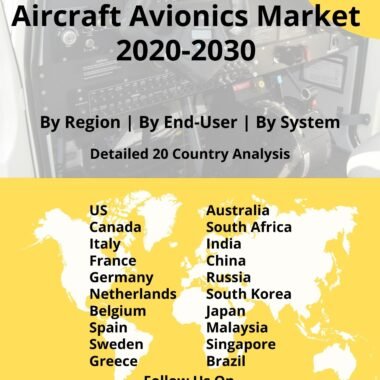Description
Defense Inertial Navigation System Market
Frequently Asked Questions of Defense INS Market
Defense inertial navigation system market as the name suggests are navigation technologies with the ability to determine position either in relation to a reference system or point or in terms of absolute coordinates. Measuring the changes in relative motion in an inertial reference frame over time is noted to be one of the main parameters that govern the functioning of the INS. It is a self-contained navigation technique that tracks an object’s position and orientation concerning a specified beginning point, orientation, and velocity by using data via accelerometers and gyroscopes.
A minimum of three gyros and three accelerometers are required for an INS system for it to generate a navigational solution. Three orthogonal rate-gyroscopes and three orthogonal accelerometers are frequently found in inertial measurement units (IMUs), which measure angular velocity and linear acceleration, respectively. It is possible to track a device’s position and orientation by processing the signals from these devices. This navigational method includes at the very least the position (normally latitude, longitude). Today, the majority of INS systems output heading, pitch, and roll. Heave, sway, and surge may also be present in some systems.
The INS was predominantly developed to solve the technology constraints and limitations associated with the application of GPS within the global defense sector. A GPS simply provides the user’s position and updates the same at a slower rate. IMU data and calibrated IMU data are combined with the GPS solution by a GPS INS. This technology is hereby noted to update rates far more frequently than the GPS and provide orientation data, roll pitch, and heading.
Additionally, The GPS signal can be jammed or blocked with utmost ease, thus technologies like adaptable navigation systems were launched by associations like DARPA to solve this technical constraint. As per studies, it is noted that the ANS addresses three key technical challenges associated with the GPS via its Precision Inertial Navigation Systems (PINS) and All Source Positioning and Navigation (ASPN) efforts.
Major factors driving the defense inertial navigation systems market size
The rise in defense budget across various nations is noted to be one of the key factors that accelerate defense inertial navigation systems market size. The defense inertial navigation systems market forecast, increased geo-political conflicts and cross-border tensions are noted to be one of the primary factors that bolster the defense budget across the global markets. Defense inertial navigation systems market analysis, territorial disputes have led to increased procurement of military technology across the global markets.
Additionally, it is noted that precise positional coordinates of an army’s armaments, firearms as well as military vehicles, naval vessels as well as aircraft are of utmost importance. Their precise position helps the military forces create strategic formations that are most helpful on the battlefield. The location allows target mapping and efficient surveillance. The increased proliferation of UAVs and UUVs is also anticipated to drive the demand for Defense Inertial Navigation Systems.
Trends influencing the defense INS market growth
A broad variety of devices and systems use inertial navigation, including military aircraft, tactical and strategic missiles, satellites, submarines, and ships. Hence the value chain for this market spans all three platforms. Defense inertial navigation systems market trends, some mobile phones have it incorporated as well for tracking and location purposes. Defense inertial navigation systems market trends, the increased penetration of telecom-based devices within the global defense markets is also noted to be one of the main factors that drive the defense inertial navigation systems market growth.
Defense INS Market Forecast & Dynamics
Defense inertial navigation systems market analysis, it is now possible to produce compact and lightweight inertial navigation systems owing to recent developments in the design of microelectromechanical systems (MEMS). These developments have expanded the range of potential applications to incorporate fields like motion capture of people and animals. INS systems were initially created for space-bound operations including rockets, the applications of this product were then extended across the value chain of the military sector.
Defense Inertial Navigation System Market Analysis for Recent Developments
A popular INS technology was noted to be the Delco Carousel which was designed for commercial aircraft. defense inertial navigation systems market reports, the Delco Carousel enabled partial automation of navigation before the widespread use of full flight management systems. Pilots could enter up to nine waypoints at once into the Carousel, which used an INS to track the aircraft’s position and speed as it moved from one waypoint to the next defense inertial navigation systems market reports.
The first production Carousel systems for the early models (-100, -200, and -300) of the 747 aircraft were designed and constructed by Delco Electronics Div. of General Motors under a subcontract with Boeing Corporation. For reliability, the 747 had three Carousel systems working together. Later, numerous additional commercial and military aircraft adopted the Carousel system and its variations for use.
The market stands as a critical enabler of precision navigation and targeting for military platforms. Inertial Navigation Systems provide accurate and autonomous guidance by relying on accelerometers and gyroscopes, making them essential for various defense applications, including aircraft, naval vessels, and ground vehicles. The market is experiencing significant growth driven by the modernization of defense systems, the need for reliable navigation in GPS-denied environments, and advancements in inertial sensor technologies. Technological innovations within the Defense INS market include the integration of Micro-Electro-Mechanical Systems (MEMS) technology, enhancing miniaturization, durability, and cost-effectiveness. Furthermore, the development of strap-down and ring laser gyroscopes contributes to improved precision and reliability in navigation.
Geopolitical considerations play a pivotal role in influencing market dynamics, with nations strategically investing in advanced Inertial Navigation Systems to bolster their defense capabilities. The ability of INS to provide accurate and uninterrupted navigation, even in contested environments, is particularly valuable in modern military operations.
In 2023 the market reflects a convergence of cutting-edge technology and strategic imperatives, ensuring the precision and effectiveness of military operations in diverse and challenging operational scenarios.







